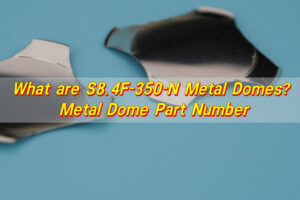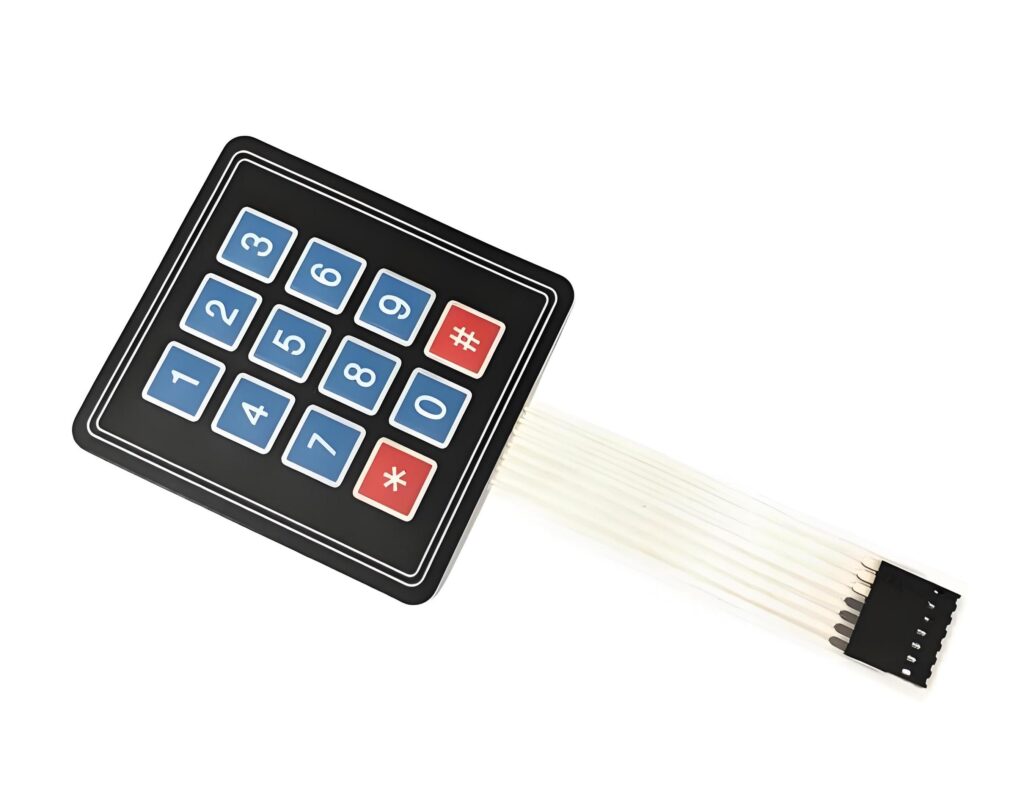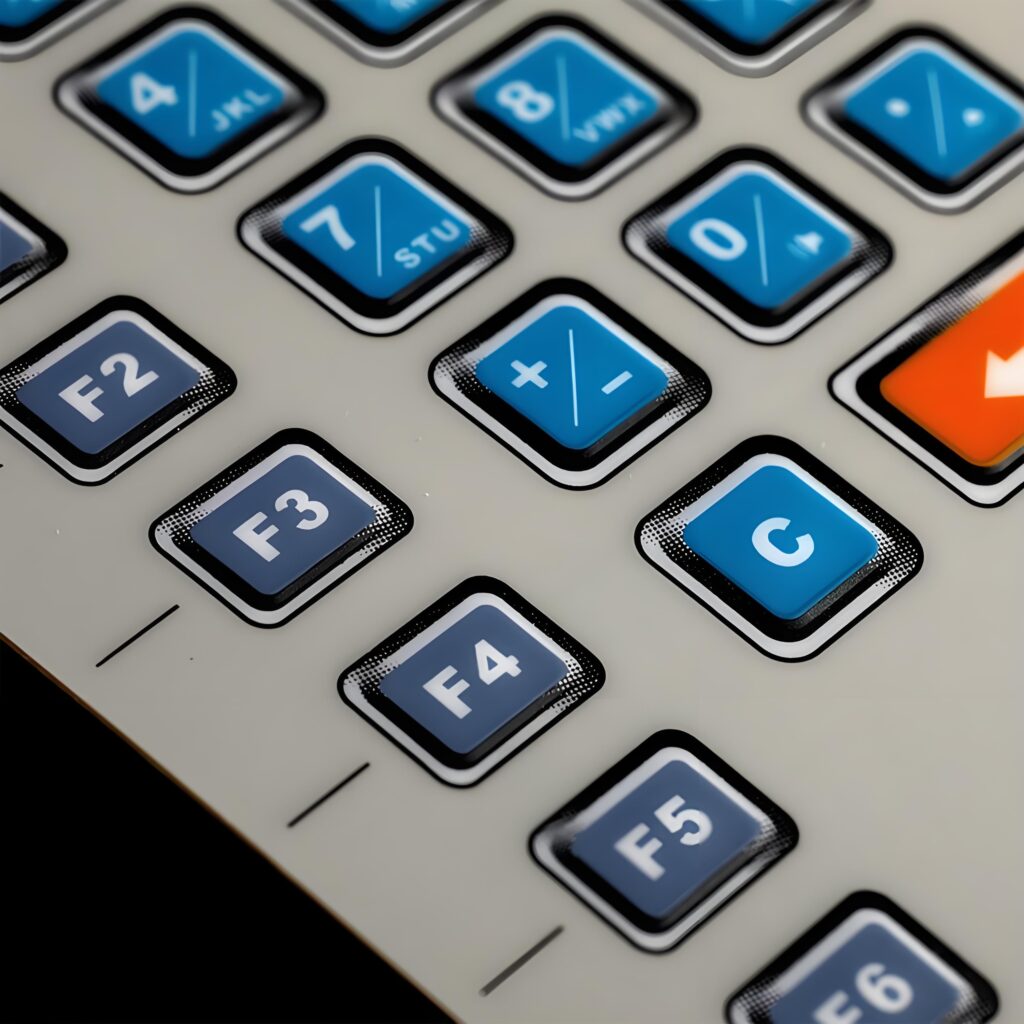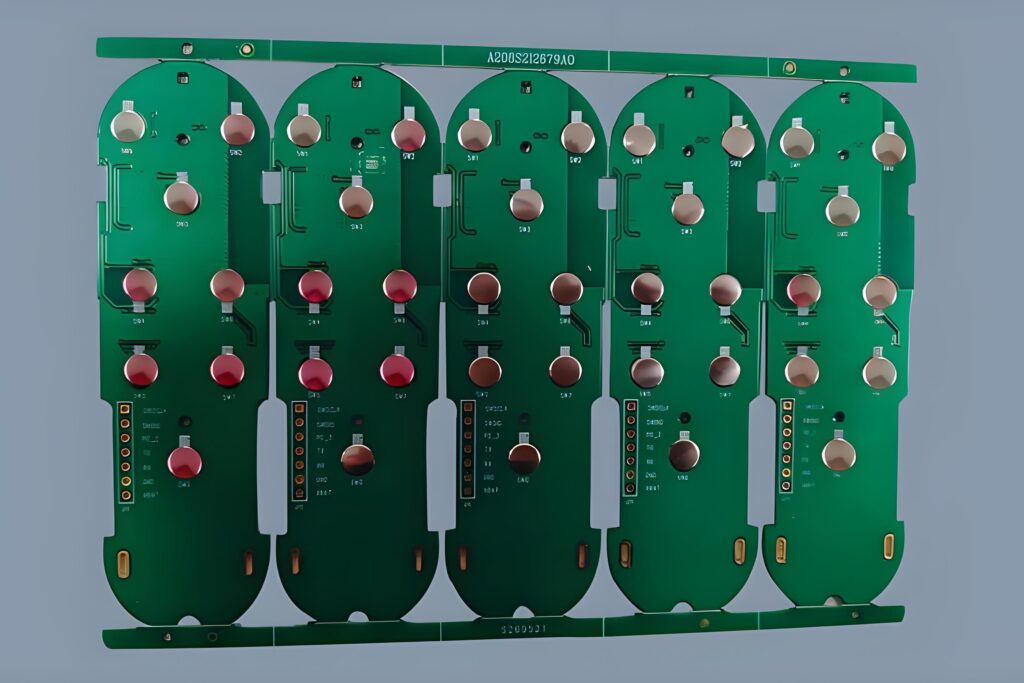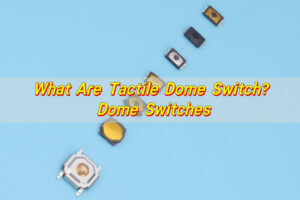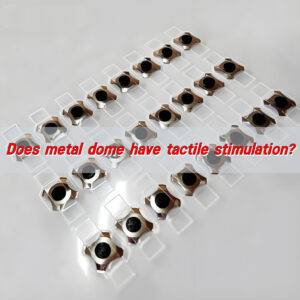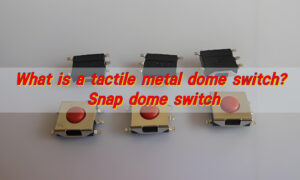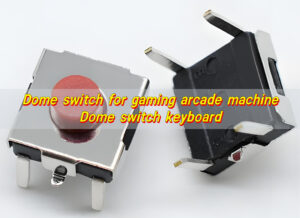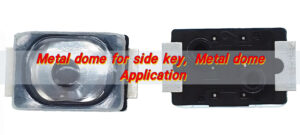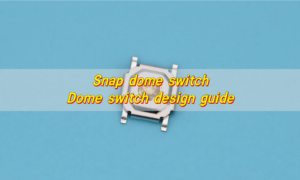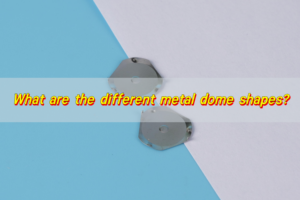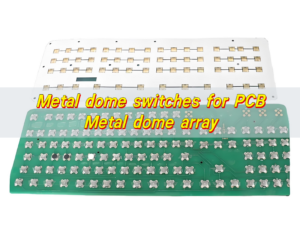Dome Switch vs Membrane switch? The main difference between shrapnel switches and membrane switches is their structure and operation. Shrapnel switches rely on the elastic deformation of metal shrapnel to switch the circuit on and off, providing clear tactile feedback, and are suitable for devices that require clear operation prompts. Membrane switches are multi-layer film structures, which are pressed to make the conductive layer contact and conduct, and have a soft touch, making them suitable for scenarios that require high sealing and thinness.
What is a dome switch keyboard?
Dome switch keyboard, often referred to as a “metal dome keyboard,” is a type of keyboard switch that uses metal domes to register key presses. These domes sit beneath the keycaps and function by collapsing when pressed. This collapsing action completes the circuit, sending a signal to the computer. The feel is usually described as a tactile bump followed by a click, providing a satisfying response to the user.
Dome switch keyboards are commonly found in various devices, including calculators, appliances, and certain types of remote controls. In fact, they are widely used in low-cost, reliable keyboards for applications where typing precision isn’t as crucial as cost-effectiveness and durability.
What are membrane switches?
Membrane switches are another popular type of keyboard switch. They function differently than dome switches, relying on flexible, multilayered membranes. These layers are composed of conductive and non-conductive materials.
When a key is pressed, the top layer of the membrane makes contact with the bottom layer, completing the circuit and sending a signal. Unlike dome switches, which offer a more mechanical feel, membrane switches are usually softer and quieter.
Membrane switches are often used in environments that require sealed, flat surfaces, like control panels, medical devices, or industrial machinery. They are also widely found in everyday electronics, including microwave ovens, ATMs, and remote controls.
What does a membrane switch do?
Membrane switch performs a simple yet essential role: it acts as the interface between the user and the machine. Whether it’s turning on a device, adjusting settings, or navigating through options, the membrane switch registers each press and sends the corresponding signal to the electronics inside the device.
The beauty of membrane switches lies in their versatility. They can be made in different sizes, shapes, and designs to accommodate a wide range of applications. Their flat, sealed structure makes them easy to clean and highly resistant to dirt, dust, and liquids.
What is the advantage of membrane switch?
One of the main advantages of membrane switches is their simplicity and cost-effectiveness. These switches are inexpensive to manufacture and are reliable over long periods.
Additionally, the design of membrane switches makes them more durable in harsh environments where exposure to water, dust, and extreme conditions is common.
Another advantage is the ability to create custom designs. Since membrane switches are flexible and can be layered in various ways, manufacturers can create complex control panels with minimal bulk. Their sleek, low-profile design is ideal for devices that need to maintain a slim and ergonomic appearance.
Where are membrane switches used?
Membrane switches are everywhere. From everyday household items to high-tech industrial machinery, their applications are vast and varied.
- Consumer electronics: TV remotes, microwave ovens, and other home appliances.
- Medical devices: Equipment like infusion pumps, heart rate monitors, and diagnostic machines.
- Industrial and commercial devices: Control panels, HVAC systems, and point-of-sale systems.
- Automotive: Used in control panels and dashboards.
Their adaptability makes membrane switches a go-to choice for manufacturers looking for reliable, cost-effective input solutions.
Dome switch vs membrane: Which one offers better tactile feedback?
Dome switches tend to offer a more distinct and noticeable feel. The metal dome provides a tactile bump when pressed, which many users find satisfying and intuitive.
On the other hand, membrane switches, due to their flexible design, are generally softer and quieter. While they still offer some feedback, it may not be as pronounced as dome switches.
Ultimately, if you value tactile feedback and precision in each press, a dome switch keyboard might be the ideal choice for you.
Dome switch vs conductive rubber: Which one lasts longer?
Dome switches typically have a longer lifespan compared to conductive rubber switches. The metal dome material is robust and can withstand millions of key presses without significant wear. This makes dome switches a good option for devices that will see heavy use.
Conductive rubber, while still durable, tends to wear out a bit faster than metal domes. Over time, the rubber can lose its elasticity, which may lead to reduced performance and tactile feedback.
However, conductive rubber switches are often more affordable and can still last for many years, depending on usage.
What is the difference between rubber dome and membrane switches?
It’s easy to confuse rubber dome and membrane switches, but they are not the same thing. Rubber dome switches feature a rubber or silicone dome that collapses when pressed, while membrane switches use a flexible membrane made of multiple layers to register a key press.
The key difference lies in the mechanism. Rubber dome switches provide more tactile feedback, similar to dome switches, but membrane switches offer a flatter and softer feel. Additionally, membrane switches tend to be more cost-effective and durable in harsher environments.
Conclusion:
Dome switches excel in tactile feedback and durability, making them a great choice for devices that require a distinct, responsive feel. They are widely used in applications such as keyboards, remote controls, and calculators. Membrane switches, on the other hand, shine in cost-effectiveness, versatility, and durability in harsh environments. They’re ideal for medical devices, consumer electronics, and industrial equipment.
If you need more information on metal dome switches or need a high-quality switch for your project, feel free to contact us at sales@metal-domes.com. We’re here to help!



